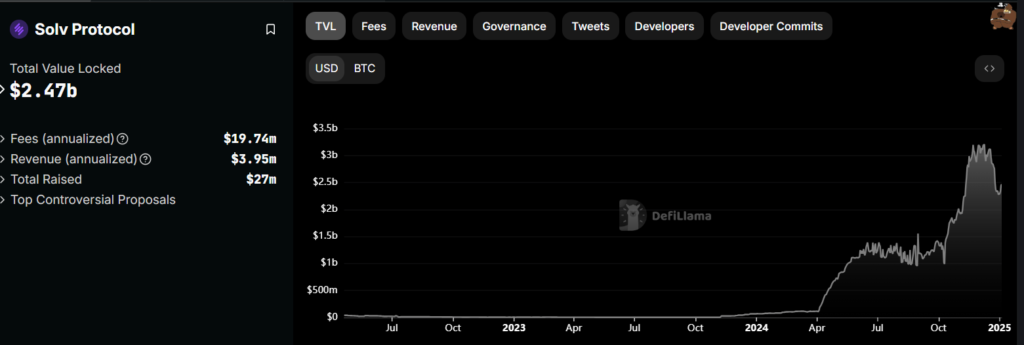In summary,
Solv Protocol, a Bitcoin staking platform, is facing accusations of inflating its Total Value Locked (TVL) from industry expert Hanzhi Liu.
Solv allegedly used pre-signed transactions to artificially boost its TVL metrics, raising concerns about transparency and asset security.
Solv Protocol has vehemently denied these allegations, calling them baseless and part of a coordinated smear campaign by competitors.
Trade with leverage, NO KYC required, and receive rewards up to $1030.Go to BingX now.

Solv Protocol, a Bitcoin staking platform, is facing accusations of inflating its Total Value Locked (TVL) metrics. Industry experts have raised these allegations, questioning the platform’s handling of assets and the accuracy of its reported figures.
However, the platform’s team has vehemently denied these accusations, calling them baseless and an attempt to spread fear, uncertainty, and doubt (FUD).
Concerns Raised Over SolvBTC’s Asset Management
On January 3rd, Hanzhi Liu, co-founder of Nubit, drew attention to potential irregularities in Solv Protocol’s operations. Liu alleged that blockchain data showed the platform was re-using the same Bitcoin across multiple protocols rather than locking unique deposits. This practice, according to Liu, artificially inflates Solv’s TVL metrics.
Liu explained that SolvBTC, the platform’s wrapped Bitcoin asset, relies on pre-signed transactions to appear in multiple staking protocols simultaneously. This method, he argued, allows a single Bitcoin to be counted multiple times across different platforms, creating the illusion of a higher TVL. For example, one BTC within SolvBTC could be reported as three BTC by leveraging this overlap across different platforms.

“Solv Protocol doesn’t lock unique BTC deposits. Instead, it uses pre-signed transactions to “authorize” the same BTC across multiple protocols:1 BTC in Solv → +1 TVL BTC Same BTC in Bsquared → +1 TVL BTC (again) Same BTC in ??? → +1 TVL BTC (again) Effectively, 1 BTC = 3 fake TVL BTC,”
Liu stated
He also accused the platform of altering TVL data on trackers like DeFiLlama and moving funds supposedly locked in staking contracts. Consequently, Liu urged users to withdraw their funds from Solv and verify if their assets were genuinely secured or being re-used across other protocols.
Solv Protocol Responds to the Allegations
Eva Binary, Marketing Director of Solv Protocol, refuted the accusations, describing them as misleading and baseless. She clarified that Solv’s TVL figures align with the standard 15-day re-staking cycle and are accurately reflected on DeFiLlama. Binary also attributed TVL fluctuations in specific pools, such as SolvBTC.BBN, to routine reward redemption processes, denying any manipulation or “3x BTC” claims.
Ryan Chow, co-founder of Solv, echoed these sentiments, accusing competitors of orchestrating a coordinated effort to damage the platform’s reputation. He further characterized these claims as part of a deliberate campaign to sabotage Solv’s operations and undermine its partnerships.
“For months, we’ve known that competitors are badmouthing us to partners, persuading them ‘don’t work with Solv, work with us, [insert the above allegations, if not more].’ We chose to ignore and get on with our work. But no more. Make no mistake. This is a smear campaign, coordinated and organized, and trying its best to take Solv down,”
Chow stated

Solv Protocol specializes in Bitcoin staking and yield generation across multiple blockchains. According to DeFiLlama, Solv currently manages approximately $2.5 billion in TVL.
Join the BeInCrypto Community on Telegram to stay updated on the latest analyses and news about the financial market in general and cryptocurrencies in particular.
All information contained on our website is published in good faith and for general information purposes only. Any action the reader takes upon the information found on our website is strictly at their own risk.


